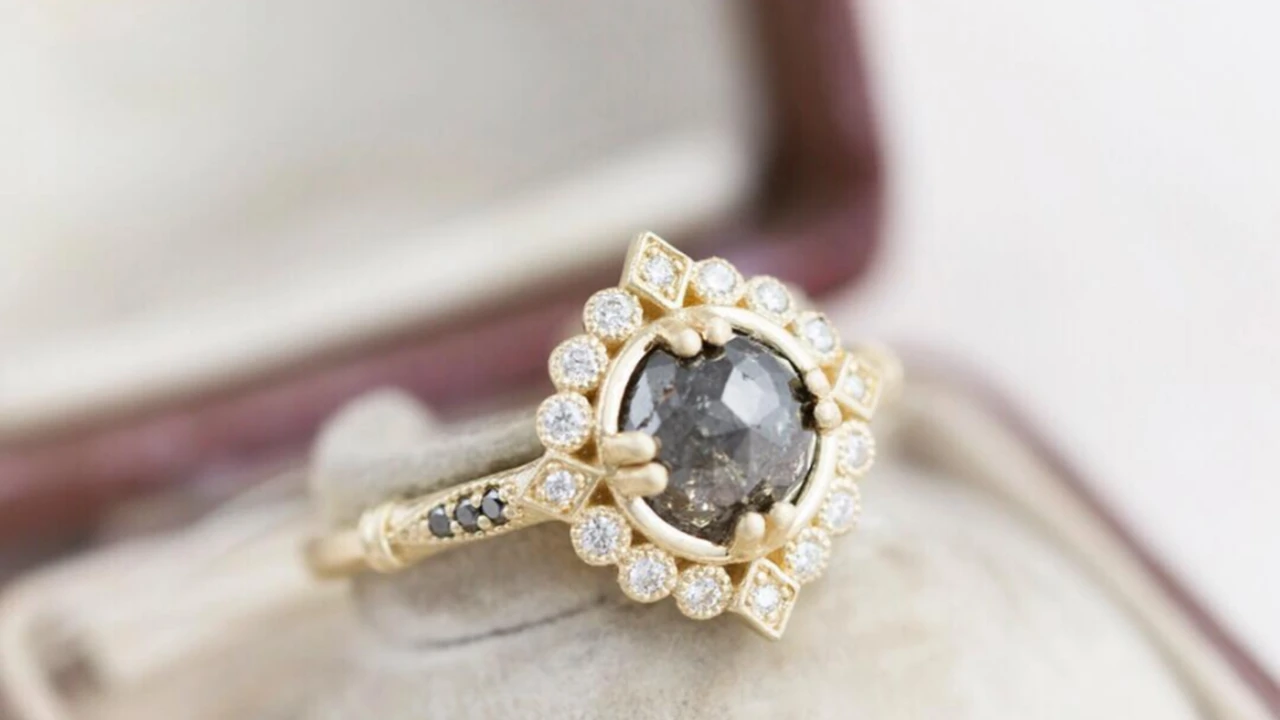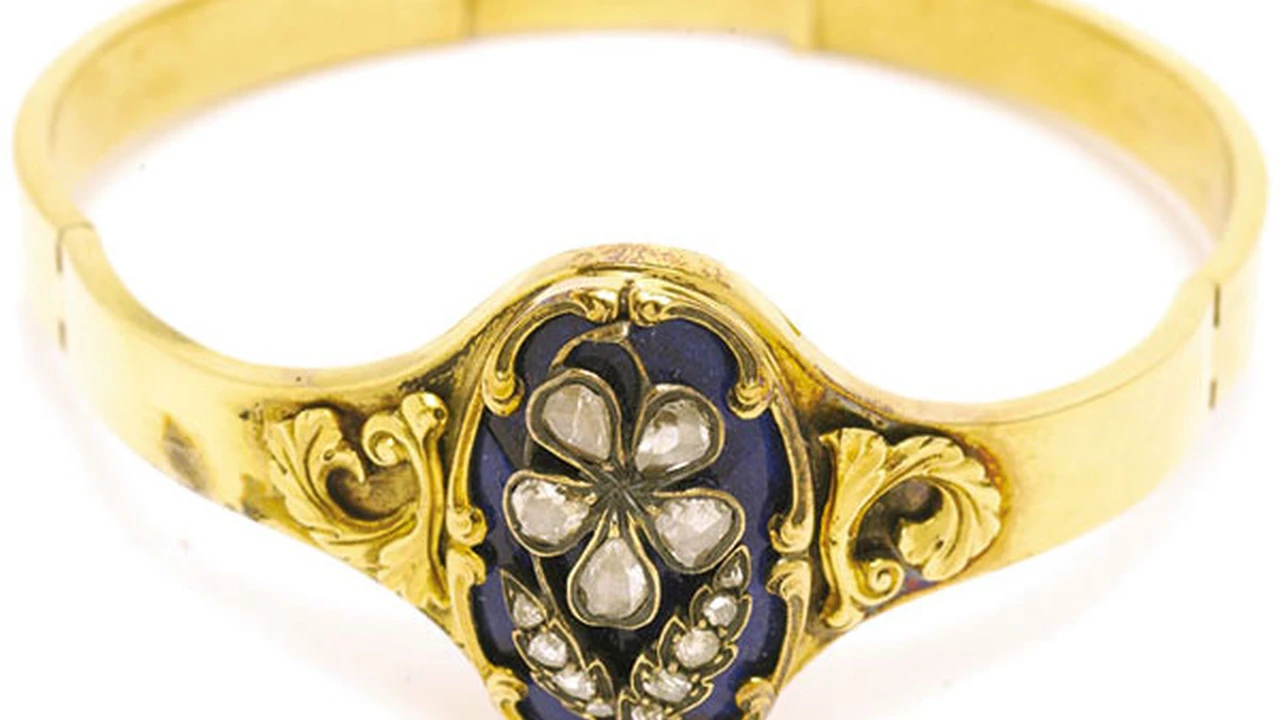Cleaning Antique Silver Jewelry A Step by Step Guide
Learn how to clean antique silver jewelry safely and effectively Remove tarnish and restore its shine.

Understanding Antique Silver and Its Tarnish
Antique silver jewelry, unlike modern sterling silver, often contains a higher percentage of silver, making it more susceptible to tarnish. Tarnish is the result of a chemical reaction between silver and sulfur compounds in the air. While tarnish can dull the appearance of your precious pieces, it's a natural process and, with the right approach, can be safely removed to reveal the silver's underlying beauty. This guide provides a step-by-step approach to cleaning your antique silver jewelry, ensuring you preserve its value and luster.
Gathering Your Supplies for Cleaning Antique Silver Jewelry
Before you begin, gather the necessary supplies. It's important to use gentle, non-abrasive materials to avoid scratching the delicate surface of antique silver. Here's what you'll need:
- Soft Microfiber Cloths: These are essential for wiping away tarnish and polishing the silver.
- Mild Dish Soap: A gentle dish soap, free of harsh chemicals, is ideal for cleaning.
- Warm Water: Use lukewarm water to dissolve the soap and rinse the jewelry.
- Cotton Swabs: These are helpful for reaching intricate details and crevices.
- Silver Polish (Optional): Choose a high-quality silver polish specifically designed for antique silver. Test it on an inconspicuous area first. We recommend Goddard's Silver Polish.
- Soft-Bristled Brush (Optional): A very soft toothbrush can be used to gently scrub away stubborn tarnish in hard-to-reach areas.
- Protective Gloves (Optional): To prevent oils from your hands transferring to the silver.
Step-by-Step Guide to Cleaning Antique Silver Jewelry
Follow these steps carefully to clean your antique silver jewelry:
- Prepare the Cleaning Solution: In a bowl, mix a few drops of mild dish soap with warm water.
- Soak the Jewelry: Gently place the silver jewelry into the soapy water and let it soak for 5-10 minutes. This will help loosen the tarnish and dirt.
- Clean with a Soft Cloth: Remove the jewelry from the water and gently rub it with a soft microfiber cloth. Pay attention to areas with heavy tarnish. For intricate details, use a cotton swab dipped in the soapy water.
- Use a Soft-Bristled Brush (Optional): If necessary, use a very soft-bristled brush to gently scrub away stubborn tarnish. Be extremely careful not to scratch the silver.
- Rinse Thoroughly: Rinse the jewelry thoroughly under warm, running water to remove all traces of soap.
- Dry Completely: Pat the jewelry dry with a clean, soft microfiber cloth. Ensure it is completely dry to prevent water spots and further tarnishing.
- Polish (Optional): If you choose to use silver polish, apply a small amount to a clean microfiber cloth and gently rub it onto the silver. Follow the manufacturer's instructions. Polish in straight lines, rather than circular motions, to avoid scratching.
- Buff to a Shine: Use a clean, dry microfiber cloth to buff the silver to a shine.
Specific Product Recommendations and Usage Scenarios
Example 1: Victorian Silver Locket
Imagine you have a delicate Victorian silver locket with intricate floral engravings. After years of being stored away, it's covered in tarnish. For this piece, avoid harsh scrubbing. Instead, focus on gentle soaking and using cotton swabs to clean the engravings. A product like Wright's Silver Cream is a good choice for removing tarnish without being overly abrasive. Apply a small amount with a cotton swab to the tarnished areas, let it sit for a minute, and then gently wipe away. This locket, once cleaned, could be worn on a long silver chain, adding a touch of vintage elegance to a modern outfit. Its value, depending on its design and maker, could range from $200 to $800.
Example 2: Art Deco Silver Bracelet
An Art Deco silver bracelet with geometric designs might have tarnish built up in the sharp corners and crevices. In this case, a soft-bristled brush can be helpful. Use a product like Goddard's Silver Polish Cloths. These cloths are pre-treated with polish and are perfect for cleaning intricate pieces. Gently rub the cloth over the bracelet, paying close attention to the details. This bracelet would look stunning worn with a classic little black dress for a cocktail party. Art Deco silver bracelets can range in price from $300 to $1200, depending on the gemstones and craftsmanship.
Example 3: Edwardian Silver Tea Spoon
Consider an Edwardian silver tea spoon with delicate floral details. This particular item might be more robust compared to delicate jewelry. In this case, you can try a silver dip solution. Many such solutions are available, but be extremely careful to follow the instructions. These solutions are very strong and can damage some stones or finishes. One good choice is Tarn-X Tarnish Remover. The price of these spoons depends on the set and the quality, but a single spoon might be worth between $50 and $200.
Comparing Cleaning Methods
There are several ways of cleaning silver. Here's a brief comparison:
- Soapy Water and Cloth: The gentlest method, ideal for delicate pieces with light tarnish.
- Silver Polish: More effective for removing heavier tarnish, but requires careful application and buffing.
- Silver Dip Solutions: The fastest method for removing tarnish, but can be harsh and may not be suitable for all types of silver jewelry.
Tips for Preventing Tarnish on Antique Silver Jewelry
Prevention is key to keeping your antique silver jewelry looking its best. Here are some tips to minimize tarnishing:
- Store Properly: Store your silver jewelry in airtight containers or pouches to minimize exposure to air.
- Use Tarnish-Resistant Strips: Place tarnish-resistant strips (like 3M Anti-Tarnish Strips) in your jewelry box or storage container to absorb sulfur compounds.
- Avoid Exposure to Chemicals: Remove your silver jewelry before swimming, showering, or using household cleaners.
- Regular Cleaning: Clean your silver jewelry regularly to prevent tarnish from building up.
When to Seek Professional Help for Cleaning Antique Silver
While you can clean most antique silver jewelry at home, there are times when it's best to seek professional help. If your jewelry is heavily tarnished, has delicate stones or intricate designs, or if you're unsure about the cleaning process, consult a professional jeweler. They have the expertise and tools to safely clean and restore your antique silver jewelry without causing damage.
:max_bytes(150000):strip_icc()/277019-baked-pork-chops-with-cream-of-mushroom-soup-DDMFS-beauty-4x3-BG-7505-5762b731cf30447d9cbbbbbf387beafa.jpg)






